Ijraset Journal For Research in Applied Science and Engineering Technology
- Home / Ijraset
- On This Page
- Abstract
- Introduction
- Conclusion
- References
- Copyright
Smart Alarm System (Drowsiness Detection System Review Paper)
Authors: Chiranjit Das, Chirag Bhatt, Uvesh Belim, Taha Bhatia, Jinil Patel
DOI Link: https://doi.org/10.22214/ijraset.2021.39519
Certificate: View Certificate
Abstract
With the increase in automative population, accident rates are rising rapidly, one of the major reasons is the state of drows-iness or fatigue. Such fatal incidents can be prevented if the driver is warned in time. With time, several drowsiness alarm systems are been implemented, the system monitors driver’s movements through various techniques, one of the most con-siderable one is face detection, Open Computer Vision is widely used to detect driver’s movements for a long period of time. A comparative study on different types of approach is summarized in this paper. The main agenda is to help the socie-ty to understand more about the techniques and find the most convenient method for them.
Introduction
I. INTRODUCTION
A recent study stated that drowsy driving is one of the major reason for fatal road accidents, around 40% percent of road accidents are caused due to drowsy driving which is estimated around 1 out of 5 accidents. With the rise in cars, such accidents are increasing along with them and has become a major concern for the driver and the members moving along with in the vehicle. This in return led to development of Driver Assistance System. Implementation of Real time drowsiness detection can assist drivers and alert them in fatal conditions. There can be a bunch of reasons behind the drowsiness of the driver such as, heavy traffic, increase in automotive population, work load and tight commute time requirements. Considering all these factors, researchers started looking for a solution to avoid such incidents. Many of them came with a variety of solutions ranging from mobile based systems to desktop one’s. The main concept behind all of these projects was driver’s face recognition.
The primary intent of this paper is to review various drowsiness detection techniques in depth to make it easier for the readers to understand and learn about them and find the most convenient approach.
The paper is divided into various sections as follows: “Terminology” section will walk you through some unique terms used in the paper ahead. “Challenges and Limitations” section is all about the difficulties occurred while implementing the systems which is followed by “Types of Approach” section where we will discuss about the variety of methodology used. The section is divided into two major parts, “Software Based” and “Hardware Based”, a comparative study will be discussed further. “Conclusion” section is about the overview of this paper and a comparative review on all the methodologies considered.
II. TERMINOLOGY
A. Drowsiness
Drowsiness is a state of abnormal sleeping, people suffering from drowsiness tend to sleep at inappropriate situations.
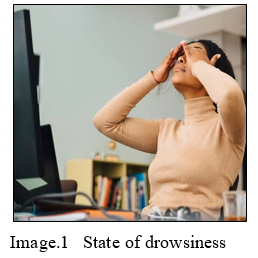
B. Face Detection
Face detection technique is divided into two parts, learning-based and feature based detection. Learning base approach compares the face with training data samples, whereas feature based approach is based on various characteristics of the driver, like skin color, position etc.
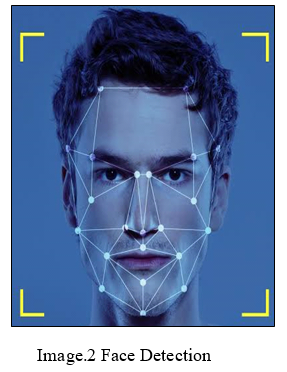
C. Eye Detection
The main purpose of eye detection is to consider driver’s symptoms. It is divided into two methods such as (1) Feature based, (2) based on IR spectrum and other methods.
D. Mouth Detection
This method is applied to detect drivers mouth features such as lips, yawning is one of the main reasons to consider this in use. This generally works well in suitable light conditions.
E. Face Tracking
Face tracking is done to check the presence of face in the media. This is one of the widely used features in various technologies.
F. Decision Making
Extracted features is considered and the symptoms are compared to declare whether the driver is in the state of drowsiness. Accuracy rate is high when all the above processes give appropriate results.
III. CHALLENGES AND LIMITATIONS
With the rapid increase in road incidents in the world the challenges also come in hand, a minor distraction can lead to a fatal accident, so detecting all these detailed features can be a major challenge for researchers. Real time results with low error is also a major challenge. To get the desired accuracy is a limitation in this approach.
IV. TYPES OF APPROACH
In this paper we will discuss two major types of drowsiness detection; Smart phone based and Desktop based techniques.
V. SMARTPHONE BASED APPROACH
Nowadays, with the rise in smart phone technology, face monitoring techniques are developed in smart phone based applications. This in return favour the condition for implementing drowsiness alert systems. Smart phone based approach requires no extra tools and every process can be performed by itself. The monitoring sensors in smartphones include electrocardiography, photo plethysmography, temperature and three-axis accelerometer, that act as an input variable for an external framework.
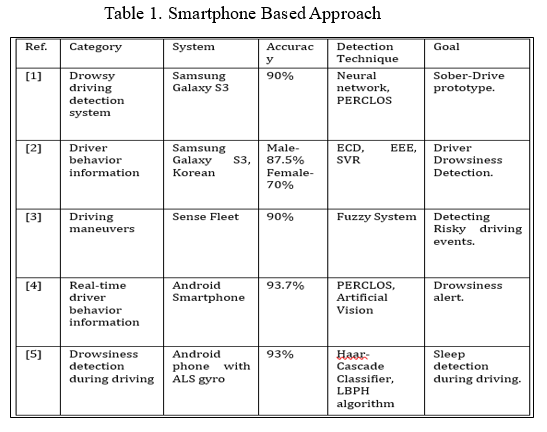
VI. DESKTOP BASED APPROACH
We classify desktop based systems in two major categories; Software and Hardware approach.
A. Software
Software is the core part of any drowsiness detection system, its purpose is to run all the algorithms and calculations in real time, in this paper, we will discuss about some major software approach used in drowsiness detection systems, they are as follows; i) Image Processing Techniques, ii) Symptom extraction and iii) Decision Making.
- Image Processing Techniques: Image processing is the major requirement in any drowsiness system, it tracks the driver’s reaction in real-time and continuous evaluation is being done in the background. The main aim is to detect driver’s facial characteristics such as eyes, mouth and movements. We will divide this into few sub topics to discuss more about the techniques used for drowsiness evaluation.
- Face Detection: Face detection is the initial stage where driver’s face is differentiated from the surrounding images. It is classified into two major techniques, Learning based and Feature based, the learning based is more robust, apart from that, low light situations can be challenging in both techniques. Let’s discuss about few face detection techniques, A learning based method was used where Viola-Jones Method was implemented, the results were robust but it was limited to angles, tilted faces were hard to be processed. A feature based technique with RGB color space implementation removed the brightness from the RGB signal but the performance varied with different skin colors and the approach was lacking. Image 3. Displays how a face is recognized in an image.
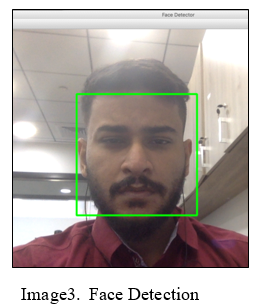
3. Eye Detection: Eye detection is the second stage after recognizing the facial features of the driver, it is also considered one of the vital information as drowsiness detection depends upon the eye and eyelid movements. There are a list of major eye detection techniques used for real time eye movement detection. Haar Classifiers is one of the most used technique which has a very high execution speed and the detection accuracy is robust, it comes with a de-merit where different lighting conditions affected the results. Vision based algorithms were considered were it was easier to train the dataset with a time complexity of O(n), but the limitation was to provide a bunch of quantitative and qualitative results.
4. Mouth Yawn Detection: A tabular representation of Mouth yawning detection is listed below, it consists of major techniques like Haar Features, Fuzzy C- Means clustering.
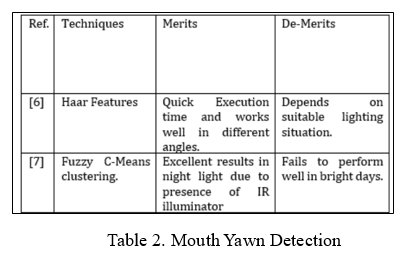
5. Symptom Parameter Extraction: Extraction of facial features is one of the crucial stages in any drowsiness detection system, after this is done the symptoms are being recognized from the images, this is a major process as the system is responsible to judge the state of drowsiness from the input images in real time situations.
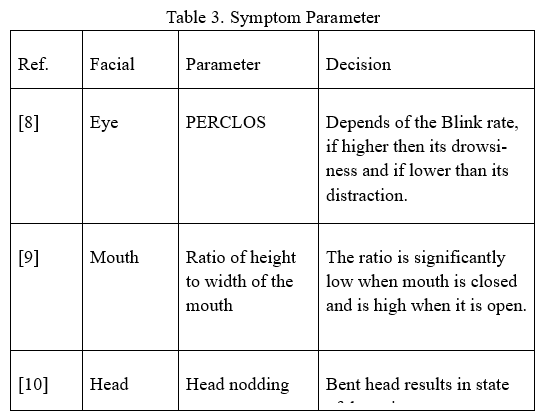
6. Decision Making: After comparing different kinds of algorithms, the last task of a system is to make an appropriate decision, decision making is the key factor of any drowsiness detection system.
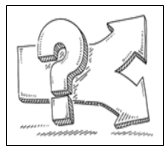
There are different kinds of approaches of how a decision is been made, they are as follows;
a. Knowledge-based Approach
b. Threshold-based Approach
c. Probability based theory
d. Statistical Methods
After detection and analyzing the facial features of the driver, particular method is applied for more accurate symptom results, all the different approach depends upon the system and algorithms chosen to test other data. Bayesian network is used as a probability method which can predict drivers future drowsiness state. Neural network is a statistical method which determines drowsiness level in two distinct sections, i) Unsupervised section and ii) Supervised section.
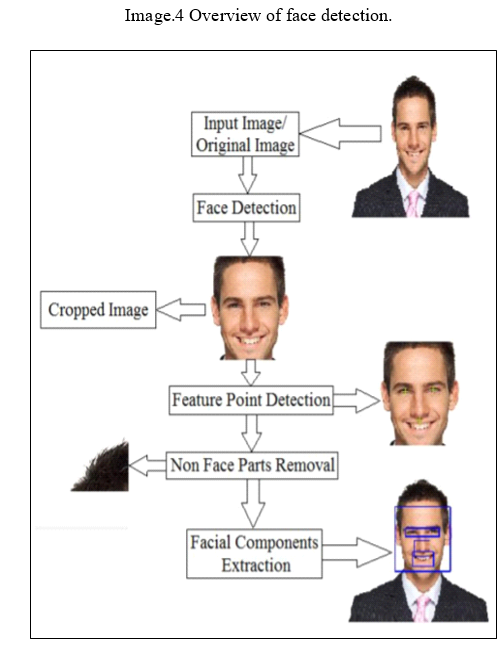
7. Hardware: Hardware components in a drowsiness detection system varies significantly. It can be a big desktop system or a small credit card sized computer running all the functions in it. The main criteria of the Hardware component is that it should be cheaper and easier to assemble and should also be an embedded system. Raspberry Pi is an incredible solution as a main hardware system as it has all the components to assemble everything in a single small sized computer, it is widely used in many drowsiness projects and has turned out to be an excellent and convenient choice for the researchers. Hardware components can vary accordingly, some of them are listed as follows:
a. Webcam
b. Raspberry Pi
c. VGA
d. OMAP
e. CCTV
Below is the tabular insight of hardware components used in a drowsiness detection system.
VII. COMPARISION BETWEEN DESKTOP-BASED AND SMART PHONE BASED SYSTEMS
With the rapid increase in technology, a wide range of PC applications found their way to be operated on mobile phones, a lot of them work incredibly well and the results are up to the mark. Face monitoring systems are also implemented on these devices. But the main question is, are they well enough to used in such fragile conditions?
Considering both, Desktop and Smart phone based applications, the desktop one’s are more reliable and the compatibility ratio is higher as compared to the mobile device. Complexity with computational tasks rises in smart phones, and due to the variety of smart phones existing, accuracy differs widely too. This all factors make smart phones a less reliable source for drowsiness alarm systems. A Tabular comparison of smart phone and desktop system is show below.
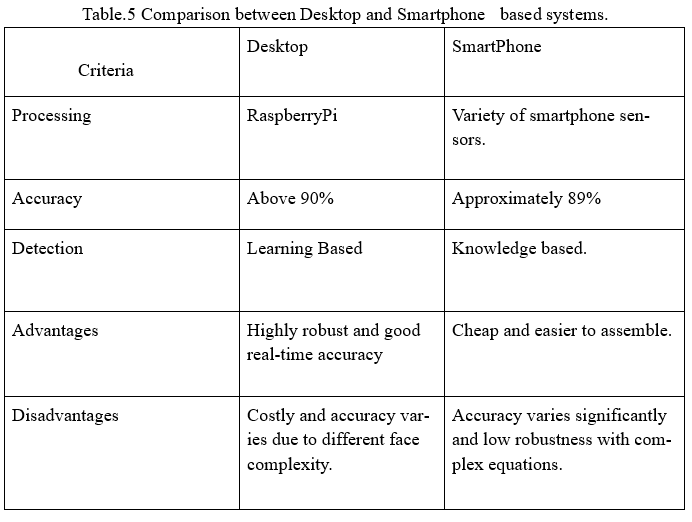
VIII. ACKNOWLEDGMENT
We would like to express our deep and sincere gratitude to our supervisor, Mr. Chiranjit Das, for giving us the opportunity and encouraging us for the whole process.
Conclusion
In this paper, we have discussed about different ways of drowsiness detection systems and their implementation. The meth-odology in the paper was divided into two main categories, Desktop Based and Phone Based drowsiness detection systems. Most of the algorithms discussed were highly robust and their compatibility range was significant too, but they did come with a range of limitations. Desktop System was further divided into two categories; Software and Hardware. The software component consisted of Im-age processing techniques and list of algorithms used for accurate detection of Face, Eyes and Mouth Yawing features. Haar cascade is highly compatible with yawn features. Furthermore, comparison between smart phone and Desktop based systems were done and it was clear that Desktop based applications were much robust and reliable for such fragile issues because smart phone was still lacking with compatibility issues and the accuracy range differed in different range of smartphones. One of the major challenge behind this review is systems compatibility in night light situations, a bunch of night camera vi-sion showed good results but they were still lacking accuracy in day light. In the end, all the problems can be overcome by researchers and a good drowsiness alarm system will be launched in every vehicle to prevent fatal accidents.
References
REFERENCES [1] Lunbo Xu, Shunyang Li, Kaigui Bian, Tong Zhao, Wei Yan, Sober-Drive: A smartphone-assisted drowsy driving detection system. 2014 International Confer-ence on Computing, Networking and Communications (ICNC), IEEE, April 2014. [2] Gang Li, Wan-Young Chung, Estimation of Eye Closure Degree Using EEG Sensors and Its Application in Driver Drowsiness Detection. Vol.14, Issue: 9, Sensors, September 2014. [3] German Castignani, Thierry Derrmann, Raphael Frank, Thomas Engel, Driver Behavior Profiling Using Smartphones: A Low-Cost Platform for Driver Monitor-ing. IEEE Intelligent Transportation Systems Magazine, Vol. 7, Issue: 1, January 2015. [4] Eddie E. Galarza, Franklin M. Silva, Paola M. Velasco, Eddie D. Galarza, Real Time Driver Drowsiness Detection Based on Driver’s Face Image Behavior Using a System of Human Computer Interaction Implemented in a Smartphone. Proceedings of the International Conference on Information Technology & Sys-tems (ICITS 2018) pp 563-572, January 2018. [5] Faisal Mohammad, Kausalendra Mahadas, George K. Hung, Drowsy driver mobile application: Development of a novel scleral-area detection method. Com-puters in Biology and Medicine, Vol.89, October 2017, Pages 76- 83. [6] Xiao fan, Bao-Cai Yin, Yan-Feng Sun, Yawning Detection for Monitoring driver Fatigue. International Conference on Machine Learning and Cybernetics, IEEE, August 2007. [7] Tayyaba Azim, M. Arfan Jaffar, Anwar Majid Mirza, Automatic Fatigue of Drivers through Pupil detection and Yawning. Fourth International Conference on Innovative Computing, Information and Control (ICICIC), IEEE, 2009.
Copyright
Copyright © 2022 Chiranjit Das, Chirag Bhatt, Uvesh Belim, Taha Bhatia, Jinil Patel. This is an open access article distributed under the Creative Commons Attribution License, which permits unrestricted use, distribution, and reproduction in any medium, provided the original work is properly cited.

Download Paper
Paper Id : IJRASET39519
Publish Date : 2021-12-19
ISSN : 2321-9653
Publisher Name : IJRASET
DOI Link : Click Here
 Submit Paper Online
Submit Paper Online

